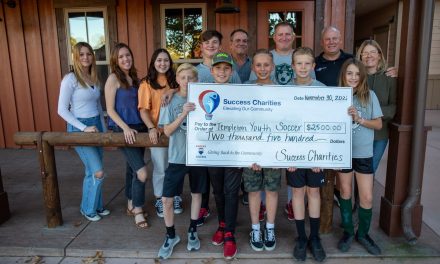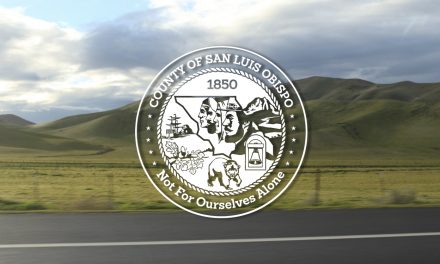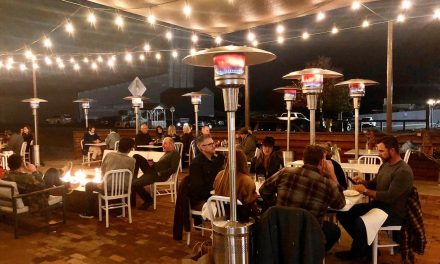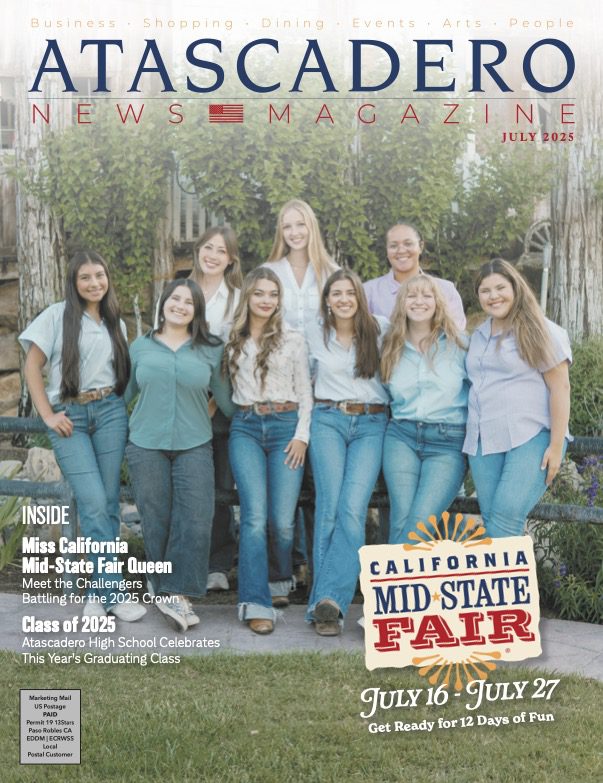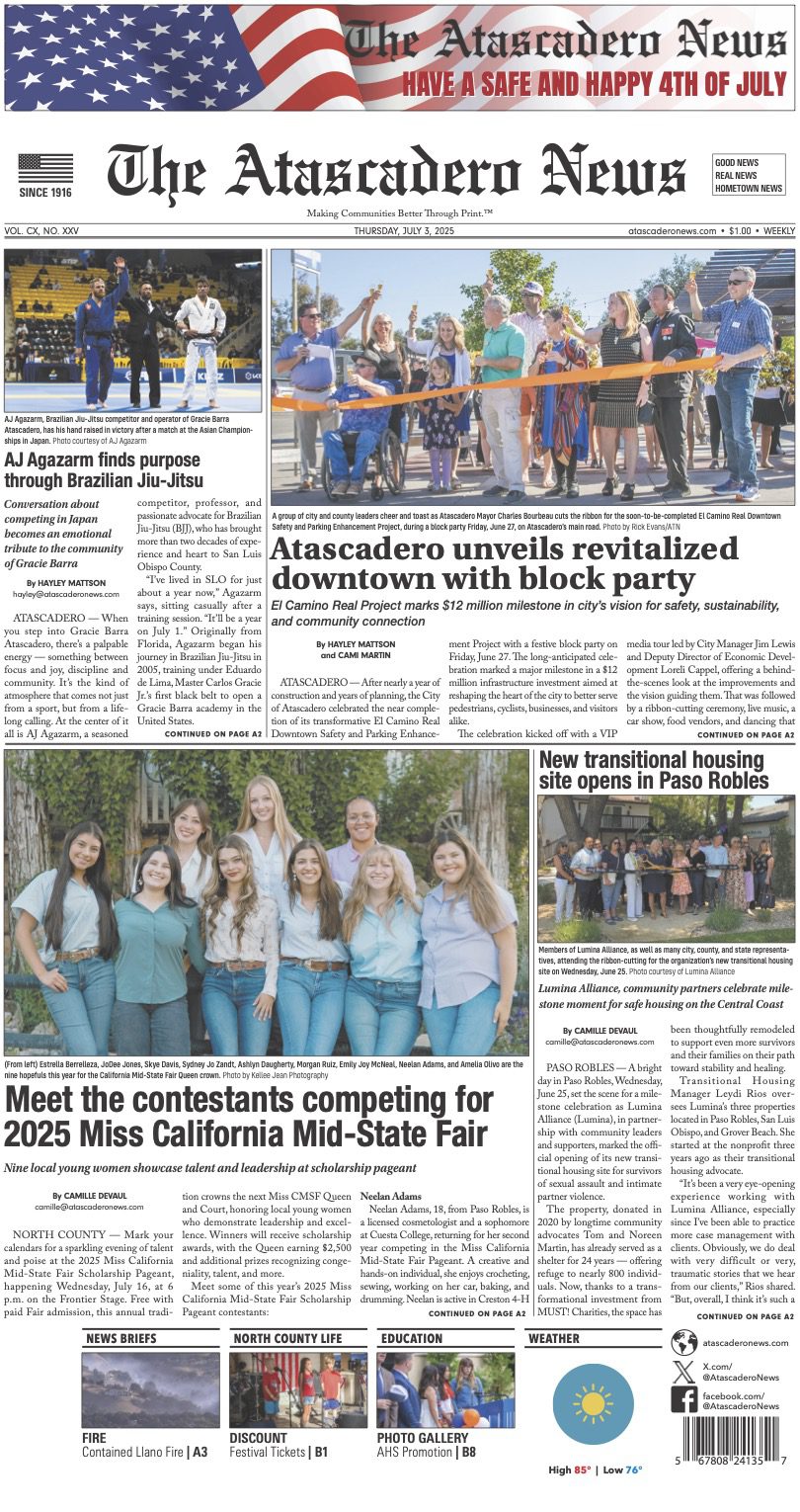Reflecting on the Life of Edward G. Lewis

The words inscribed over the main entrance of Atascadero’s Administration Building, “Keep your face to the sunshine and you cannot see the shadows” represent the pervading spirit of the founder of Atascadero: Edward G. Lewis, a man truly endowed with unlimited imagination, boundless energy, and unwavering optimism.
Born March 4, 1869, he was reared and educated in the older cities of the eastern states with their narrow, crooked streets leading to beautiful homes in one part of the city, slums in another and factories with smoking chimneys about. This experience would later stoke his imagination and vision for communities with the loveliness and healthfulness of the country, as well as the conveniences and advantages of the city.
In 1890, he married Mabel G. Wellington and in 1898 they moved to St. Louis, Mo. He sold his successful business interests and turned his attention to the publishing business. In 1899, he acquired the Winner magazine, which had an existing circulation of 376,000, but was losing money due to the high cost of printing. There were no presses with enough capacity in St. Louis to print the magazine at a low enough cost. With skillful acquisitions and partnerships, he resolved the cost issues. Having secured excess paper and press capacity, he then purchased the Woman’s Farm Journal in 1901 for $1,000 and increased its circulation to 600,000. He started the Woman’s Magazine and in four years it had reached a monthly circulation of 1.6 million, the largest circulation of any periodical in the U.S. Other profitable periodicals followed and he established The Lewis Publishing Company in 1903 with $1.2 million in capital, a veritable fortune in those days. He quickly became the largest publisher of periodicals in the country with a circulation of four million per issue. Due to his focus on women’s issues and support for the suffrage movement, Lewis had tapped into a growing base for his publications and amassed the wealth that came with it.
Not being satisfied with only his growing publishing empire, E.G would start a new endeavor, creating cities. This began with the purchase of just 85 acres of pastureland a few miles west and outside the city limits of St. Louis. This property was very close to the site of the upcoming 1904 World’s Fair. His vision for this property was ultimately the design and building of the model community he called University City. His plans included a central business district, beautiful residential neighborhoods and ornate civic buildings. To promote University City during the World’s Fair, E.G. created a “tent city” called Camp Lewis which he used not only to house potential buyers, but also subscribers and attendees at the World’s Fair. There were 200 cozy sleeping tents, plus separate tents for recreation and dining, a hospital, a barbershop, etc., and in addition there was scheduled bus service to and from the fair. Over the course of its life, Camp Lewis hosted over 80,000 subscribers to his magazines along with potential buyers.
University City was a great success and E.G. was elected mayor twice. In 1908, the Lewis Publishing Company hosted fellow publisher, William Randolph Hearst and his wife Millicent who toured the publishing company headquarters at the Woman’s Magazine building, now city hall of University City.
With the power and nationwide influence of his journals and newspaper as a platform, he vigorously advocated three measures then considered extremely advanced and visionary: women’s suffrage, a postal bank and parcels post. In 1905, E.G. organized the Peoples Bank in University City. It was the first bank by mail in America. He later recounted how subscribers would pay in postage stamps, gold and other items in the absence of banking services. It was brilliant, an immediate success with the public, but too successful. It took profit away from several of the existing railway express companies throughout the U.S. that offered similar services. The former president of one of these companies was then a U.S. senator. Using his influence, the senator was able to get a deputy postmaster general appointed whose sole responsibilities seemed to be to shut down E.G. and his bank. The bank died in 1906 after two consecutive receiverships. It was the first and last time that postal inspectors formally acted as bank examiners. Depositors were refunded in full and the stockholders received 87 cents on the dollar.
The government’s attack on E.G. did not end there: in all, fourteen indictments were brought by the postmaster and the battle raged on for seven years. Cases were thrown out or no verdict of guilt was returned.
Ever the optimist, in December 1907 Lewis organized several of his publications into a league and established the American Woman’s League. The League, organized by state, sold the publications and received the commissions. Approximately 700 Chapters were formed across the country. In 1911, the League morphed into an organization focusing on women’s rights. The American Woman’s Republic was a fee-based membership organization that helped women learn about government and politics in preparation for the right to vote. At their first convention in 1912, with over 1,000 delegates attending, they ratified the Declaration of Equal Rights and adopted the Constitution. With University City as the capital, they formed a Senate, House of Representatives and Supreme Court, organizing regions in each state. E.G. Lewis retained the counsel of Belva Lockwood, who acted as Attorney General, to help guide the organization. She was the first woman to run for president as the candidate of a recognized party and the first woman attorney to plead cases before the U.S. Supreme Court. Incidentally, the community of Lockwood in Monterey County was named after her. Eventually, Atascadero was established in the name of the American Woman’s Republic.
Although E.G. Lewis was ultimately exonerated of any crimes, the seven-year battle to save his name broke his health and forced him into bankruptcy in 1911. He decided not to seek a third term as University City Mayor. Instead, he and Mabel turned their attention to the West, toward a dream of a new master-planned community centered on the automobile and a healthful lifestyle in a “valley of peace” and a colony for the American Woman’s Republic.
Next time: E.G. Lewis – The Atascadero Period.





